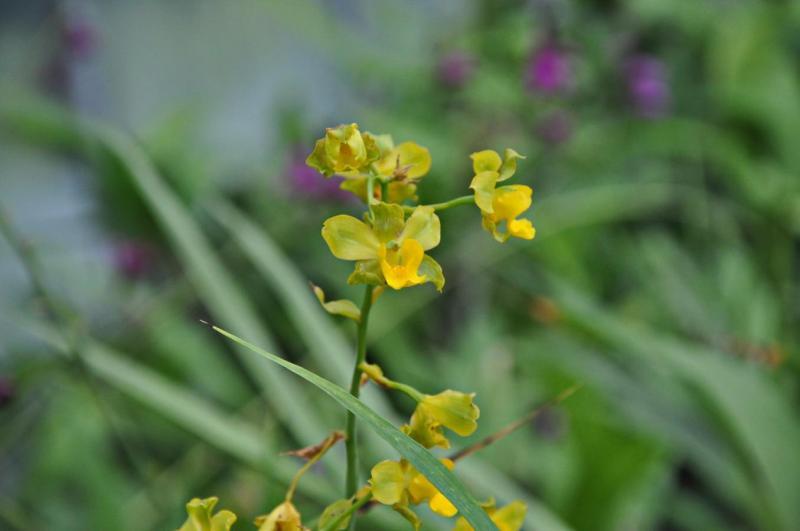Cyrtopodium andersonii
Also known as: Anderson's Cyrtopodium or Cyrtopodium flavescens Cyrtopodium andersonii var. flavescens Cyrtopodium roraimense in the subfamily: Epidendroideae
Native to: Brazil
General Information
Anderson's Cyrtopodium is a sympodial warm to hot growing epiphytic orchid belonging to the sub family Epidendroideae native to Brazil. It is named after the Swedish Orchid Collector In Brazil early in the 19th century.
Plant Description
Sympodial. Grows to 160cm. Each new growth has numerous leathery lance shaped leaves that grow to 2-60cm long. Pseudobulbs grow to 3-100cm
Flowers
Numerous fragrant blossoms appear during Spring
Fragrance
The orchid is fragrant.
Blooming Season
- Spring
Substrate(s)
- Fine
- Bark
- Treefern
- Spaghnum Moss
- Perlite
- Sand
Care Notes
These orchids have a fine root system that can quickly die back if left dry for too long, but also does not like to be kept wet, so water regularly but ensure that the mix is dry before watering.
Fragrant:- IsFragrant
Climate
Grows at low to high elevations. Rainfall ranges from 46mm to 221mm per day, heaviest in July and lightest in March. Humidity ranges from 73% to 81%, highest in July and lowest in March. Temperature ranges from 19C to 28C, highest in September (22C to 28C) and lowest in January (19C to 26C).
Watering
These orchids prefer a wet-dry cycle between waterings, they should be watered frequently but only when the moisture is approaching dryness, where the pot feels light and/or the media looks dry. Keep an eye on mounted orchids in warm weather as they may dehydrate quickly.
Fertiliser
dormant-medium-demand-orchid Use balanced fertiliser during Spring and Summer. Apply fertiliser regularly at half strength year round. Use a high Nitrogen fertiliser during Spring and Summer. Use a high Phosphorous fertiliser during Summer.
Potting
It's best to observe the root system when repotting and use that as a guide:
A plant with a short root system will do better in a shallower pot with a fine mix, or mounted on fern or cork supplanted with a good amount of moss or similar material.
A plant with a long root system often does well in a pot filled with moss or fine media, mixing in perlite and charcoal is always beneficial to reduce the likelihood of the mix becoming soggy and keeps it fresh.
A plant with a coarser long root system can be potted in a deeper pot, but with 2/3 coarse material such as bark, expanded clay, or coco chips and topped with moss or similar material. This will allow the moisture to remain inside the pot but give the roots air as well.
Repotting is best done annually.

